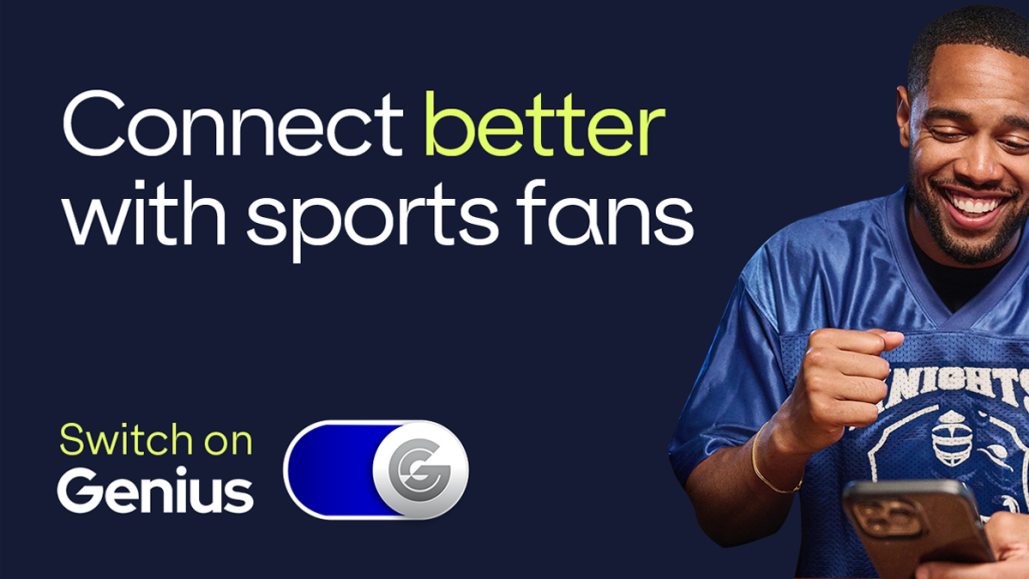Save 50% on a 3-month Digiday+ membership. Ends Dec 5.

Josh Linforth, Managing Director – Media & Engagement at Genius Sports
During last year’s UEFA European Championship, international beer brand Heineken wanted to try something different. A major sponsor of the soccer tournament, it sought to achieve much more than brand awareness; its primary goal was to inspire more fans to drink their product in pubs across the U.K.
To do this, Heineken intertwined its campaign with the tournament itself. It adopted a dynamic approach by linking its creative and messaging to what was happening in real-time, game-by-game, to capture the excitement of one of the most-watched events in world soccer.
For instance, on the eve of matches, live countdowns were used to encourage fans to book a table. Then, the campaign became celebratory in real-time as goals went in.
Unlike England’s PK takers, Heineken’s campaign hit the target when it mattered most. Across Facebook and Instagram, it reached more than 16 million users around on-trade locations and drove a 1.8x return on ad spend (ROAS).
Sponsors and marketers wanting to target sports audiences are employing similar tactics to elevate their campaigns. They are increasingly turning to live sports data.
Live sports data offers a new level of engagement
Ad position: web_incontent_pos1
Live sports data refers to anything relating to a sporting event that could be used to contextualize ad creative, messaging and the timing of campaign execution to engage sports fans. This includes the basics—such as when and where a game is taking place—to in-game stats such as passing yards, touchdowns alerts and who’s in possession of the ball at any given moment.
Many brands have traditionally focused on segmenting sports fans to improve their chances of success. Knowing where a fan is and the team they’re likely to follow is helpful, but this only gets the marketing team so far.
Fans won’t build affinity with a brand unless the connection with sport is authentic. Successful advertisers are layering in contextualized storytelling for each fan. Before, during and after games, fans turn to their phones for news, stats and analysis. These interactions add value to their experience; for brands, this is an excellent opportunity to connect. The target audience is engaged and looking for ways to immerse in the big game, their favorite team and in-form players.
Brands use live data to connect with fans when it counts
Making live sports data accessible to fans helps build trust, showing audiences that brands care about the same games, leagues and players.
Ad position: web_incontent_pos2
Often, brands will run half-time campaigns with the sole objective of getting as many eyes on their product as possible. However, they are going further than that to engage markets, updating fans in real-time effectively.
For example, using live sports data allows brands to run adverts when a touchdown or three-pointer is scored, backed up by a relevant message and stat, to activate in the moments that matter most to fans. And because their products are linked to what’s happening on the field, fans will get that authentic sports experience — engaging content instead of self-promoting ads.
Using live sports data to build a future-proofed strategy
One of the other key benefits of this approach is that it’s privacy compliant. Instead of extracting users’ personal information without their permission, brands using this strategy provide valuable content (sports updates and data) and allow audiences to choose how they’d like to receive it.
As the value of the third-party cookie diminishes, marketers and brands are looking to shift from behavioral targeting to contextual targeting. As they do so, many are learning to collect first-party data by building trust with audiences, and brands that share live sports data meet both of these goals.
Just as data on the weather and time allow brands to leverage live conditions, live sports data pulls in the sporting narrative — such as which teams and players are performing best and how the game is unfolding. This enables brands to enact contextual strategies based on what sports fans read or watch.
When seeking to engage sports audiences, such as NFL, NBA and NCAA fans, successful marketers are thinking bigger than traditional activations. In this case, bigger means more focused, targeted and tuned in to how fans interact with the game.
Context is critical when connecting with and monetizing fans on digital platforms and channels. Brands that prioritize sharing the sporting storyline and embracing authenticity stand a better chance of tapping into the passion of sports fans and driving their campaign performance.
Sponsored By: Genius Sports
More from Digiday

What publishers are wishing for this holiday season: End AI scraping and determine AI-powered audience value
Publishers want a fair, structured, regulated AI environment and they also want to define what the next decade of audience metrics looks like.

Ulta, Best Buy and Adidas dominate AI holiday shopping mentions
The brands that are seeing the biggest boost from this shift in consumer behavior are some of the biggest retailers.

Digiday+ Research Subscription Index 2025: Subscription strategies from Bloomberg, The New York Times, Vox and others
Digiday’s third annual Subscription Index examines and measures publishers’ subscription strategies to identify common approaches and key tactics among Bloomberg, The New York Times, Vox and others.
Ad position: web_bfu



